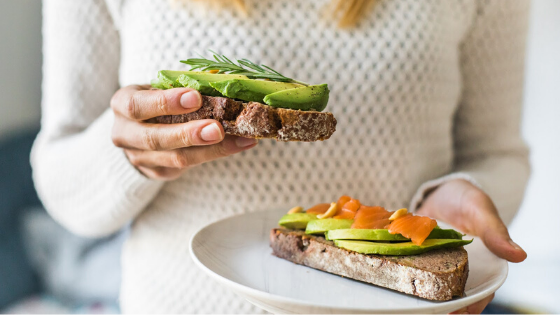As women, we all know that having a menstrual cycle can have its ups and downs. However, many women are not always aware of how big an impact it may have on their everyday living.
From energy, mood and sex drive to painful periods, PMS and digestion, these can all be exacerbated or supported by the functioning of your menstrual cycle. Luckily there are many ways you can positively impact your cycle. By navigating nutrition, exercise and stress management, you’ll have a better understanding of how to live in harmony with your body.
Some key signs and symptoms your menstrual cycle may benefit from a little TLC are:
- Irregular cycles
- Extremely heavy periods
- Painful periods
- PMS
- PCOS
- Reliance on birth control for symptom management
- Poor sleep
- Decreased energy or sex drive
- Weight gain and cravings
- Depression and anxiety
There are four phases in the menstrual cycle. On average, a women’s cycle may be between 28-30 days, with many individual variances. If you are currently using the birth control pill, your body will not be going through these same cycles and processes as outlined below.
Hormone signals are sent back and forth between the brain and the ovaries, causing changes to the sacs in the ovaries that contain eggs (follicles) and the uterus. The first part of the cycle prepares an egg to be released from the ovary and builds the lining of the uterus, while the second phase prepares the uterus and body to accept a fertilized egg, or to start the next cycle if pregnancy doesn’t happen
The first half of the cycle is days 1 – 14.
The Menstrual Phase
What’s happening: Day one of your cycle is the first day of your period, which is when the uterine lining starts to shed. A healthy cycle will last 3 – 7 days.
How you may be feeling: Many women are looking for comfort during this time, whether it be through food, rest, or movement. You may be noticing increased fatigue, poor digestion, acne, irregular mood, cramps or sore breasts. Often cravings for salty, sugary and fatty foods make their appearance.
Foods to consume: Consuming blood building foods such as red meat, lentils, liver, dark leafy greens, egg yolks and prunes is beneficial during the menstrual phase due to blood loss. Soups, stews and warming teas can be relaxing and nourishing to your digestive system as they are easy to digest. Craving some chocolate? Go ahead and enjoy some high quality, organic 70-80% squares! Cacao is high in magnesium which can be supportive for menstrual cramps. For optimal estrogen support try adding 1 – 2 tablespoons of ground flax to your diet over the next 2 weeks.
Supportive exercise: Take it slow the next few days. This is where tuning in and listening to your body will pay off long term. When we push through, especially with high intensity exercises, we’re more vulnerable to experience signs and symptoms of burn out. Focus on yoga, stretching, and short walks.
Stress management: Schedule in some total days off for yourself without the guilt! Decrease social gatherings if you need to and curl up in bed with some tea and a good book. Deep breathing exercises can help to energize you gently and help support your parasympathetic nervous system if you are experiencing increased stress or anxiety at this time.
The Follicular Phase
What’s happening: Once your period is over and until ovulation, follicle stimulating hormone will support follicles in your ovaries to grow. One of these follicles will contain an egg that will become dominant and be released during ovulation. This is when estradiol (a type of estrogen) is at its peak. This phase will last on average from 10 – 14 days.
How you may be feeling: Estradiol will have you feeling more energetic and happier along with an increased sex drive and motivation. Your skin tends to look its best at this time and your focus is at an all-time high.
Foods to consume: With your increased activity you’re going to find yourself reaching for snacks more often. This is totally normal and actually needed to help replenish your body during this active period. Focus on consuming an abundance of healthy fats such as fish, avocado, olives and walnuts. Eat quality protein like grass fed, pasture raised meats and eggs along with vegetarian sources such as beans and legumes. Healthy fats and quality proteins are hormone supportive, they help to reduce inflammation and will satisfy your appetite without the blood sugar spikes and crashes.
Supportive exercise: Now’s the time to step up your intensity. Want to work on sprints, lift heavier weights or try a new combat workout class? Go for it!
Stress management: If you have a daunting task that needs to be completed or have excess items on your to-do list to check off, schedule these around this phase if possible. Your motivation, energy and mood are at their peak so use it to your advantage.
The second half of the cycle is days 14 – 28
The Ovulatory Phase
What’s happening: This is when the dominant follicle we talked about before bursts open. It releases an egg into the fallopian tube. It lives for up to 24 hours and may or may not be fertilized by sperm. This is when you are able to conceive and become pregnant.
How you may be feeling: Energy, libido and motivation are still in high gear; however, it is not uncommon to have cramping and pelvic pain during this time due to the ovulation process.
Foods to consume: Your activity level is still going strong at this time so remember it’s normal to have increased meal sizes or quantities of meals. Choose complex carbohydrates like whole grains, legumes, and starchy veggies over-processed white breads and packaged snacks that are less satisfying nutritionally and will leave you feeling hungry and exhausted. Choose veggies from the brassica family for healthy estrogen metabolism! These include broccoli, cauliflower, brussels sprouts, kale, mustard greens and cabbage.
Supportive exercise: Stay on that exercise high from the week before and continue on with some higher intensity or new-to-you workouts. Think difficult terrain hikes or adding an extra set to your circuit training.
Stress management: Take time now to look at your calendar and schedule some relaxing and restorative activities for the next coming weeks where your energy may be taking a slight dive. Keeping this in mind and planning for it will help you mentally when you’re feeling you should be accomplishing more. By scheduling in rest, you’ll be doing your body and mind a huge favor for the long haul.
The Luteal Phase
What’s happening: The corpus luteum starts to grow on your ovary which is how progesterone is produced. If the egg that was released does not get fertilized, the corpus luteum is reabsorbed and progesterone drops, signaling your period to begin where you will be back to the menstrual phase.
How you may be feeling: Now you may have some of the tell-tale PMS symptoms creeping in like tender breasts, poor mood, decrease in energy and libido, along with food cravings.
Foods to consume: For many women, digestive problems start to appear during this time in their cycle. If gas, bloating and constipation are sounding all too familiar, it’s time to add in some gut supportive foods. Fibre is important for keeping bowel movements regular and moving xenoestrogens out of the body. They are foreign estrogens, substances that are close enough in molecular structure to estrogen that they can bind to estrogen receptor sites resulting in negative symptoms. Sources of xenoestrogens are found plastics, pesticides, chemicals, and our water systems. Foods such as leafy greens, avocado, chia, and psyllium husk are excellent sources of fibre. Probiotic-rich foods like kimchi, sauerkraut and cultured yogurts are beneficial for healthy gut bacteria which is imperative for proper gut and brain health support.
Supportive exercise: Now its time to start rest and rejuvenation where you focus on gentle movements such as walking, yoga and stretching. Don’t be afraid to schedule a few days with no movement planned if that’s what you’re being called to.
Stress management: Take this time to focus on gratitude by making a list each day of 5 things you are grateful for. This practice has been shown to positively affect mood and overall wellbeing, which can be feeling like an all-time low around this point in your cycle.



